Basic Characterization of Solar Cell
In-Line Four Point Probe Tester
Amorphous/microcrystalline Silicon Materials
Steady State Solar Simulator for Solar Cell
Analysis of Defects in Performance Test
Appearance Inspection Platform
Potential Induced Degradation Test
Reverse Current Overload Tester
Potential Induced Degradation (PID) Tester
Current Continuity Test System
Environment Induced Decay Aging Test
Research on Reducing Reflection Loss in Perovskite/Silicon Tandem Solar Cells
Perovskite solar cells are solar cells that use perovskite crystals as the main light-absorbing material. They have the advantages of high photoelectric conversion efficiency, simple structure, diversified preparation processes, and low cost. At present, the theoretical conversion efficiency of single-junction perovskite solar cells can reach 33%, and the theoretical conversion efficiency of perovskite/silicon tandem solar cells, which has attracted widespread attention in the market, can reach 43%, and has a breakthrough single-junction solar cell Shockley- Queisser's ultimate potential. However, reflection losses at the internal interface play a crucial role in the overall efficiency of the tandem cell. RTIS PV-Reflectometer from Millennial Solar can test the light reflectivity intensity of textured wafers in different wavelength bands, and perform automatic multi-point measurements. The test results are finally presented in a visual curve to help customers monitor cell reflectivity and film thickness information.
Reflection loss study
The optical loss of solar cells mainly includes reflection loss and parasitic absorption. There are two main ways to reduce reflection loss. One is to design an anti-reflection layer on the front surface of the solar cell to increase the anti-reflection capability of the front surface. The second is to use a textured substrate to maximize the light absorption entering the solar cell. Both can effectively improve light absorption.
Parasitic absorption
First, we briefly introduce parasitic absorption. The absorption of inactive layers in solar cells is called parasitic absorption. These absorptions do not contribute to the short-circuit current density in solar cells, so the improvement of parasitic absorption is important in optical optimization. In the non-absorbing layer, the main cause of parasitic absorption is the absorption of light by the transparent conductive layer. Transparent conductive layers mainly include graphene, silver nanowire electrodes, thin metal layers with MoOx as a buffer layer, zinc-doped indium zinc oxide (IZO) or ITO, etc. Each material has its advantages and disadvantages.
By analyzing the light loss of solar cells, the parasitic absorption of all materials can be directly seen, so that materials with large parasitic absorption can be optimized in terms of thickness, material, band gap, etc. Solar cells with different structures have different materials that cause major parasitic absorption, and the optimization methods also change accordingly. The optimization of parasitic absorption has a very important impact on the optical optimization of tandem cells.
Reflection loss
In perovskite/silicon tandem solar cells, reflection loss accounts for a large part of the optical loss, and the design of the anti-reflection layer can reduce light reflection and increase light absorption. Commonly used materials for anti-reflection layers include LiF and MgF2 materials, or reflective layer structures such as LM foil and PDMS.
In 2017, Manzoor et al. of Arizona State University in the United States used a coating made of PDMS polymer with random pyramids on a silicon cell sheet with planar front and rear surface texturing, and obtained 3.0 and 1.7mA/cm2 respectively. The short-circuit current density is increased, and this coating is applied to perovskite solar cells. Due to its smaller refractive index, the PDMS layer can reduce the front reflectivity of solar cells and adjust the current mismatch problem of tandem cells.
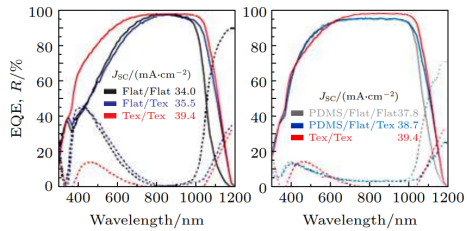
Comparison of EQE of solar cells with and without PDMS anti-reflection layer
In 2018, Germany's Helmholtz Institute used textured LM foil on the front of the tandem cells, increasing the efficiency of the stacked device from 23.4% to 25.5%.
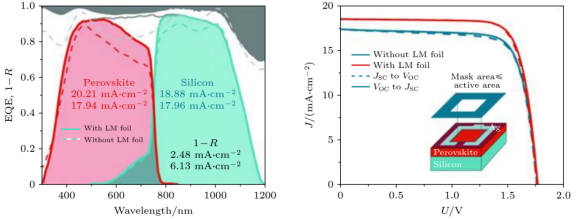
Comparison of optimization results of LM foil as anti-reflection layer
However, since PDMS and LM foil are a kind of polymer, the simulation of optical properties is complicated. Therefore, MgF2 and LiF are used as anti-reflection layers in many works, and MgF2 and LiF have lower absorption and thinner thickness. For incident light, The anti-reflection effect is better.
The Helmholtz Institute in Germany applied LiF in tandem cells in 2019 and optimized the perovskite thickness. Finally, it achieved a conversion efficiency of 26% and a short-circuit current density increase of 1.4mA/cm2. In the same year, Germany's Fraunhofer Institute for Solar Energy Systems also used another anti-reflective material, MgF2, and its optical properties were greatly improved.
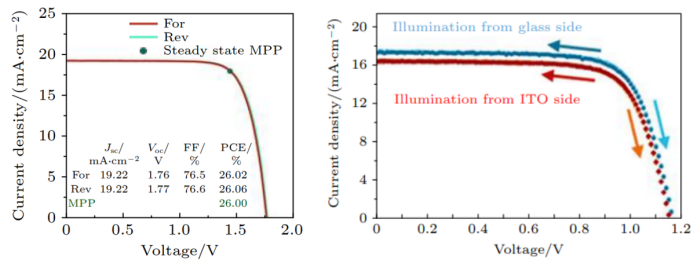
Comparison of cell optimization results using LiF (left) and MgF2 (right) as anti-reflection layers
Substrate light trapping structure
In perovskite/silicon tandem solar cells, the light-trapping structure of the substrate can cause the incident light to be reflected multiple times inside the solar cell, fully absorbing the light and reducing reflection losses. The surface of the substrate is textured by texturing to form a pyramid-like light trapping structure. Such a light trapping structure increases the absorption of infrared photons, generates more photogenerated carriers, and increases the overall current and efficiency of the cell. Therefore, it is also very important to optimize the light trapping structure of the substrate. Effective light trapping structure design can greatly improve cell performance.
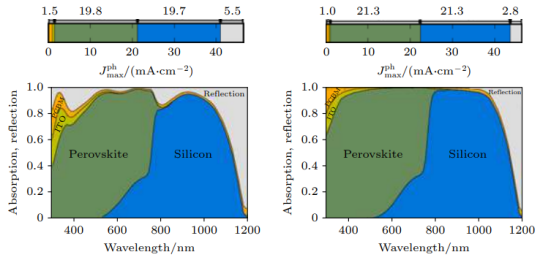 .
.
Cell EQE diagram without (left) and with (right) light trapping structure
Solar cells without a substrate light-trapping structure, that is, tandem cells with perovskite top cells deposited on a flat silicon surface, suffer from serious reflection losses. The double-sided textured silicon tandem cells as the bottom cells have the best optical properties.
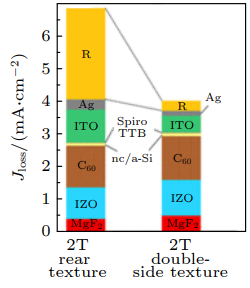
Comparison of light loss of solar cells with single-sided texture and double-sided texture
RTIS PV-Reflectometer
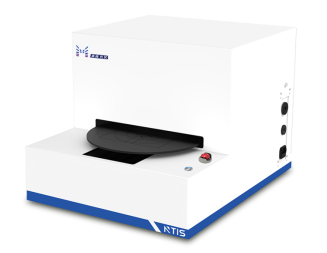
E-mail: market@millennialsolar.com
RTIS PV-Reflectometer is an important helper for process inspection of solar cell manufacturers. You can test the reflectivity intensity of the textured sample to light in different wavelength bands, excite the cell through diffuse reflection, and detect it with a spectrometer at an 8-degree angle. RTIS has a positioning machine platform and guide rails, which can easily and quickly feed samples, realize the positioning of cell samples, and improve the work efficiency of users.
●Spectral test range can reach 350-1050nm
● Fast and automatic any multi-point measurement
● The test speed of each point is about 0.1s, and the detection time is only 1/10 of the traditional reflectivity
● Accurately measure many important parameters such as reflectivity and film thickness
The photovoltaic industry is a cost-oriented industry. Cost reduction and efficiency improvement are the core of development, and continuing to improve the conversion efficiency of photovoltaic cells is an effective measure to reduce the entire cost of photovoltaic power generation. In recent years, the conversion efficiency of perovskite/silicon tandem solar cells has increased rapidly. Once this high-efficiency cell technology is truly mass-produced, it will promote a significant reduction in the cost of photovoltaic power generation, and will vigorously promote the development of the photovoltaic industry in my country and even the world.
Want to know more? Please contact us.
For more information about these stories or the Millennial Group, please contact us.
Fast Delivery & Comprehensive Support
Provide customers with comprehensive support from product to production line operation through on-site operation guidance and after-sales technical support.
Name *
Company
Title
E-mail *
Phone number *
City *
Country
Please select a product category
I am interested in receiving information about *
My message